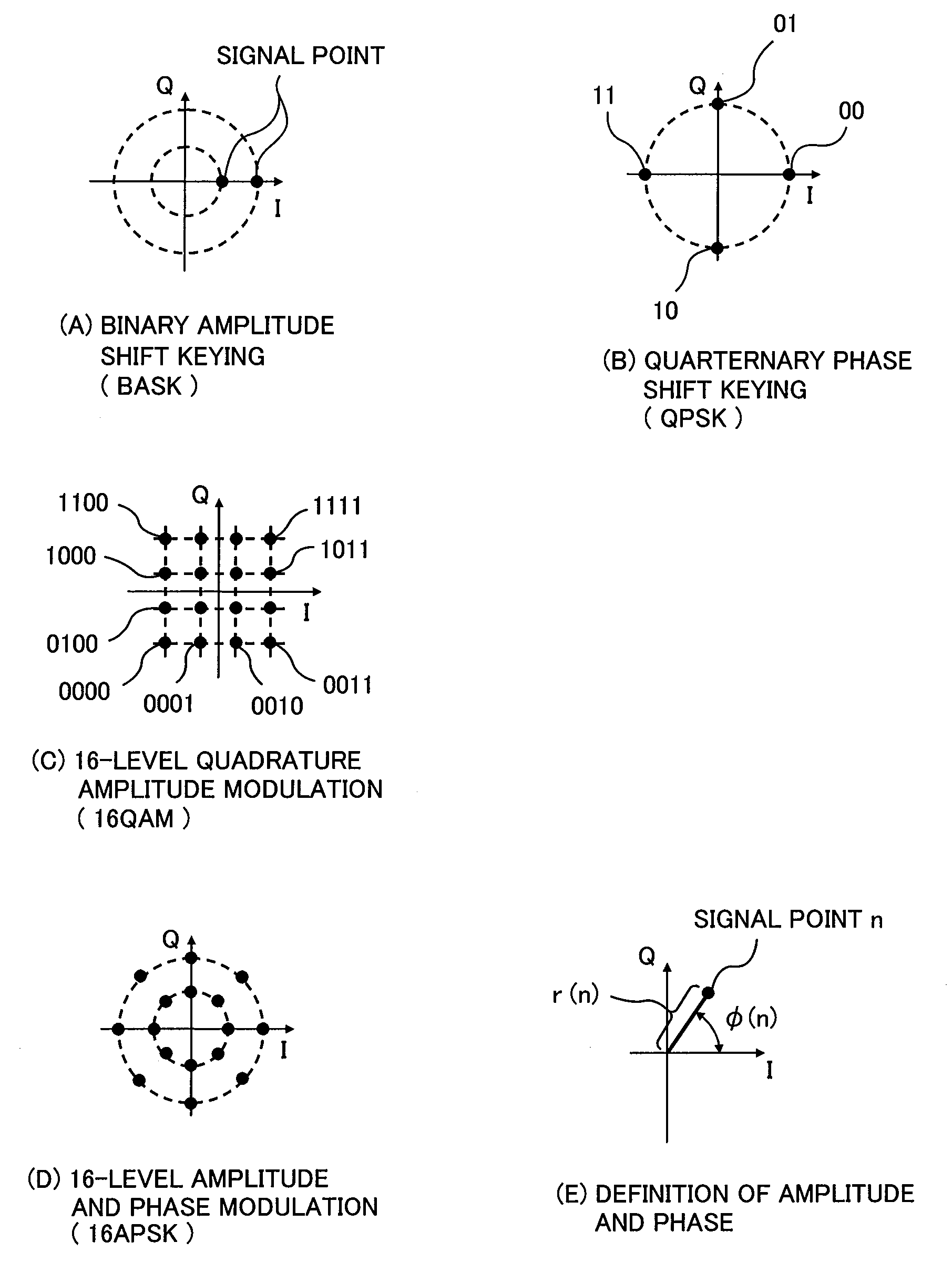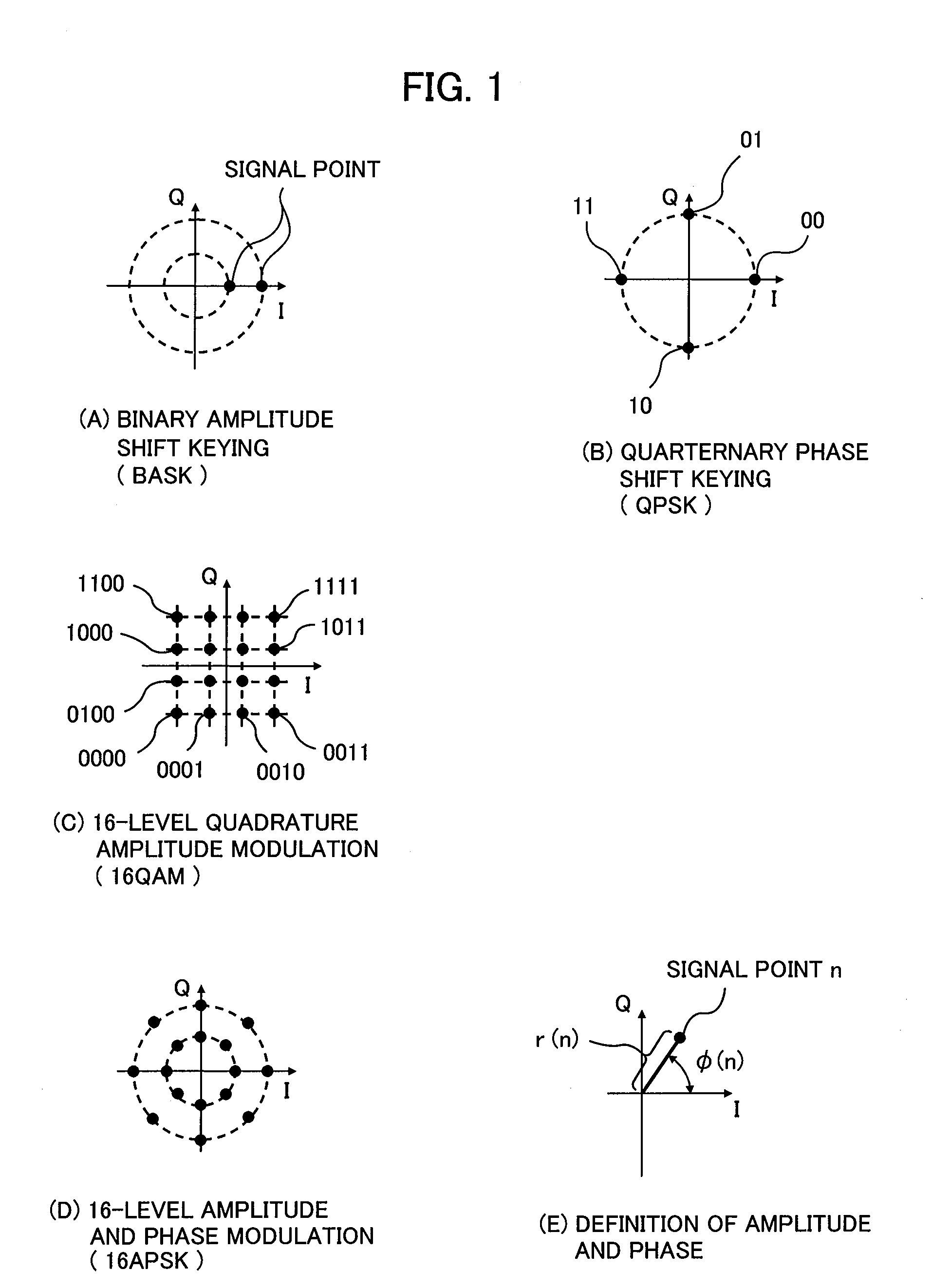Optical field receiver, optical multilevel signal receiver, and optical transmission system
- Summary
- Abstract
- Description
- Claims
- Application Information
AI Technical Summary
Benefits of technology
Problems solved by technology
Method used
Image
Examples
first embodiment
[0053]FIG. 5 shows a first embodiment of an optical field receiver 100 according to the present invention. In FIG. 5, a path of an optical signal is represented by a thick line and a path of an electric signal is represented by a thin line.
[0054]An input optical signal 101 represented by equation r(n)exp(φ(n)) is branched into two optical signals by an optical branching circuit 102, likewise the decision-feedback type multilevel phase modulation receiver according to the prior art described in FIG. 4, to input to optical delayed demodulators 104-1 and 104-2. The optical delayed demodulators 104-1 and 104-2 include a first optical path that imparts a delay of a symbol time T to the input signal and a second optical path that has a phase shifter having a phase angle of 0 or π / 2 so that the phases in two demodulators deviate by π / 2 from each other, thereby to interfere a state (symbol) of the phase shifted optical multilevel signal with a symbol received previously by time T.
[0055]The ...
second embodiment
[0070]FIG. 8 is a second embodiment of the present invention and shows an optical multilevel signal receiver using the optical field receiver 100 shown in FIG. 5. When noise occurs in a transmission laser or an optical amplifier, these noises (for example, phase fluctuation) become a fluctuation factor of the optical field phase reconstructed in the optical field receiver. When optical multilevel signal 123 including the phase fluctuation θ(n) is received, the second embodiment can eliminate the influence of the phase fluctuation θ(n) from the reconstructed multilevel digital signal.
[0071]The received optical multilevel signal 123 is processed in the optical field receiver that includes the optical branching circuit 102, the optical delayed demodulators 104 (104-1 and 104-2), the balanced optical receivers 105 (105-1 and 105-2), the A / D converters 106 (106-1 and 106-2), the delay adjusting circuits 108 (108-1 and 108-2), and the field processing unit 111, which is the same as the co...
third embodiment
[0088]FIG. 11 is a third embodiment of the optical field receiver of the present invention and shows the optical multilevel signal receiver of the configuration that adds the optical intensity receiving function and the clock extraction function.
[0089]In the third embodiment, the input optical multilevel signal 123 is divided into three optical signals in the optical branching circuit 150. The first and second optical signals are input to the optical delayed demodulators 104-1 and 104-2, respectively and the third optical signal is input to the optical intensity receiver 151. The outputs of the optical delayed detectors 104-1 and 104-2 are converted into electric signals in the balanced optical receivers 105 (105-1 and 105-2), such as in FIG. 8, and then supplied to the field processing unit 111 via the A / D converters 106 (106-1 and 106-2) and the delay adjusting circuits 108 (108-1 and 108-2). The output signal of the optical intensity receiver 151 is converted into the digital sig...
PUM
 Login to View More
Login to View More Abstract
Description
Claims
Application Information
 Login to View More
Login to View More - R&D
- Intellectual Property
- Life Sciences
- Materials
- Tech Scout
- Unparalleled Data Quality
- Higher Quality Content
- 60% Fewer Hallucinations
Browse by: Latest US Patents, China's latest patents, Technical Efficacy Thesaurus, Application Domain, Technology Topic, Popular Technical Reports.
© 2025 PatSnap. All rights reserved.Legal|Privacy policy|Modern Slavery Act Transparency Statement|Sitemap|About US| Contact US: help@patsnap.com



